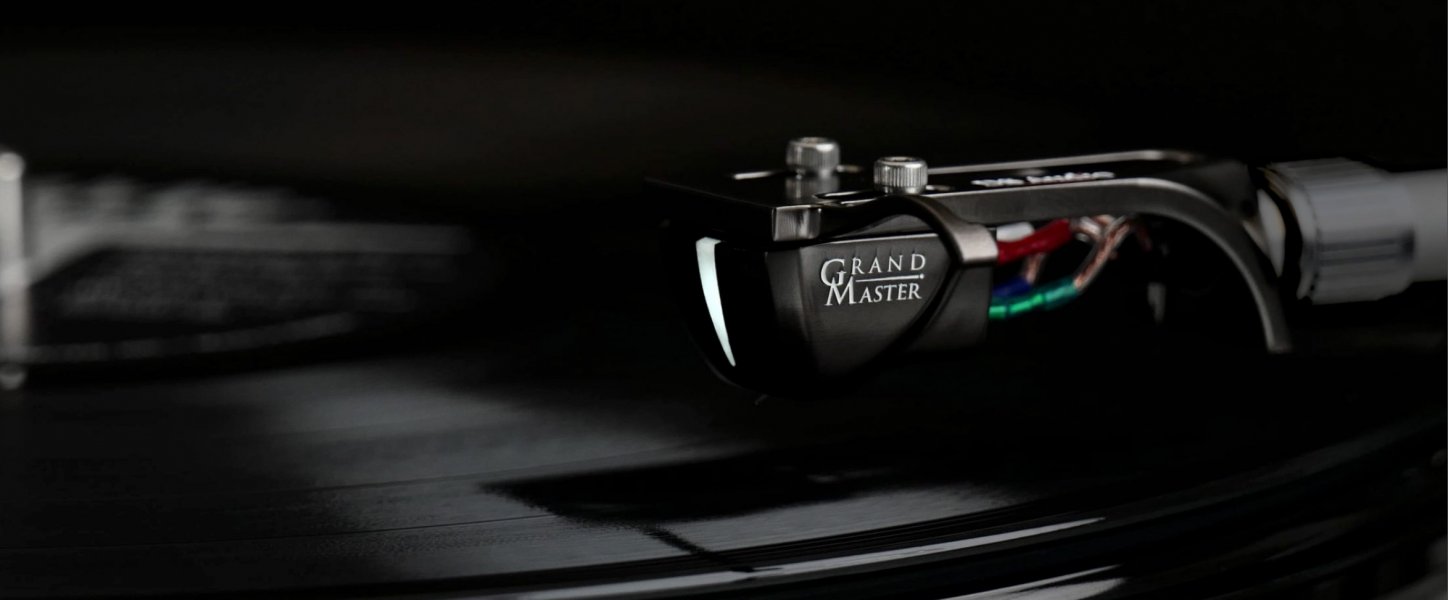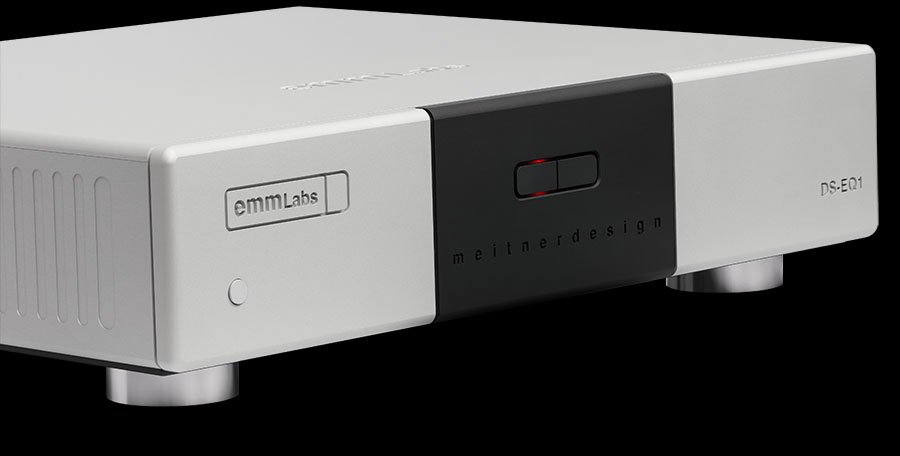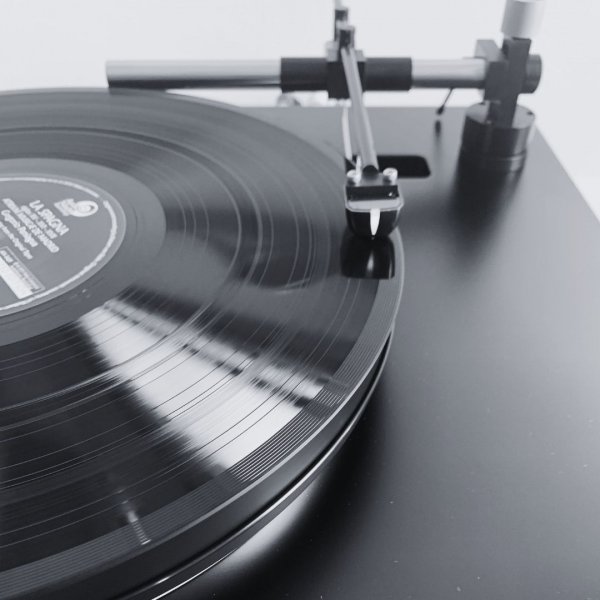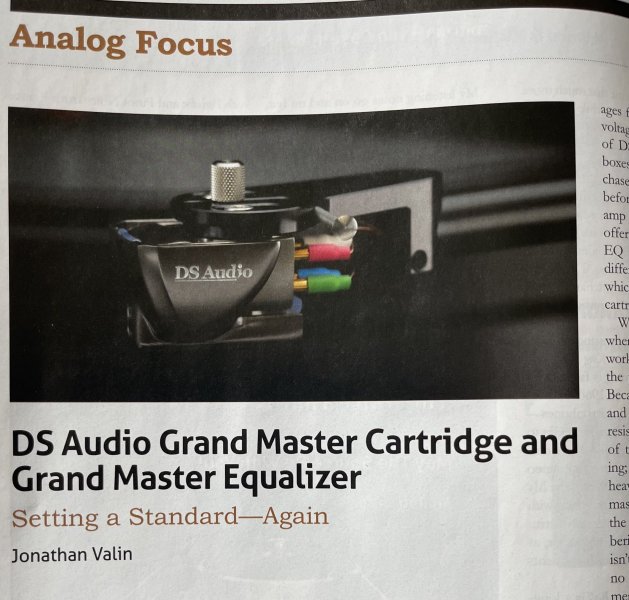
I had a revelatory vinyl experience tonight. I visited my friend in Long Beach who owns the Wilson Audio XVX speaker system. He played for me several hours of his musical selections, as well as three of my standard test tracks:
“Hallelujah” by Jeff Buckley, Grace (Columbia)
“Send in the Clowns" by Bill Henderson, Live at the Times (Jazz Planet Records/Classic Records) (played three times)
”I've Got the Music in Me" by Thelma Houston, I've Got the Music in Me (Sheffield Lab 2)
Instead of his usual Lyra or Proteus or Dynavector cartridge on the Air Line tonearm of his Kuzma XL DC he spun my vinyl using the DS Audio Grand Master optical cartridge and the EMM DS-EQ1 phono stage/analog optical decoder.
Tonight changed my understanding and view of phono cartridges.
Initial impressions:
1) To my ears this system achieves the transparency of a Lyra Atlas and a Dynavector and a van den Hul Colibri without, for me, the generally analytical, clinical, fatiguing or aggressive sound, or the high frequency emphasis, of those cartridges.
2) Despite the greatest transparency or at least equal to the greatest transparency I have heard from any cartridge, there was no exaggerated sibilance.
3) The cartridge exhibits a sound which is transparent and very dynamic, but which also somehow sounds unhurried and unforced -- not frenetic, like I always find the Lyra Atlas to sound.
4) There was a delicacy to the sound which I associate with linear-tracking tone arms, but this may be because the cartridge was riding on a linear-tracking tonearm.
5) At first I thought this cartridge tends to suppress the sounds of clicks and pops and vinyl record surface noise. Then I realized it is not suppressing anything. It simply does not accentuate ticks and pops and surface noise compared, in my opinion, to moving coil cartridges.
6) Y'all are going to misinterpret this analogy, but once you hear this cartridge you will understand what I am talking about here. This cartridge makes vinyl playback sound a little bit like the best digital playback. By suppressing ticks and pops and vinyl surface noise, the cartridge appears to increase the signal-to-noise ratio of the reproduced sound.
7) The deliberations and decisions we are accustomed to forging to balance resolution and transparency with musicality and naturalness and non-fatiguing sound are, to me, now largely moot. One no longer has to suffer an analytical or a fatiguing sound to achieve state-of-the-art transparency.
8) This cartridge, like the Grado Epoch3, lays bare the reality of the rising high-end frequency response of most moving coil cartridges.
9) This cartridge and decoder system moves vinyl play back closer to the sound of analog tape.
10) I think this cartridge merges the most desirable sonic attributes of the Lyra Atlas and the van den Hul Colibri genre of cartridges with the Air Tight Opus and PC-1 Supreme and My Sonic Labs genre of cartridges. If one wants something of the conscientiously low frequency centered (Grado Epoch3) or warmer or more romantic variety (Koetsu) or a vintage sound (SPU) then one may want a second cartridge.
11) I will not miss the variability and uncertainty of adjustable cartridge loading. No futzing is possible with a DS Audio cartridge.
12) I can understand somebody wanting a warmer, richer, bourbon-y, Shindo-type sound for cold evenings and hot jazz, or just for a different presentation of, or perspective on, the music.
13) I think this optical technology moves vinyl playback to the next stage of its evolution.
For my Bergmann Odin tonearm I will no longer be purchasing an Air Tight Opus 1. I will be purchasing a DS Audio Grand Master.
I can only hope that Jim White of Aesthetix hears the extent to which this optical cartridge moves vinyl playback to the next stage of its evolution, and decides to design an optical decoder of his own to accompany the Io Eclipse.
I do not know Ed Meitner. Friends and clients of Ed Meitner should contact him and learn why he decided to back very seriously the DS audio technology and cartridges -- and report back to us here at WBF.

Last edited by a moderator:






